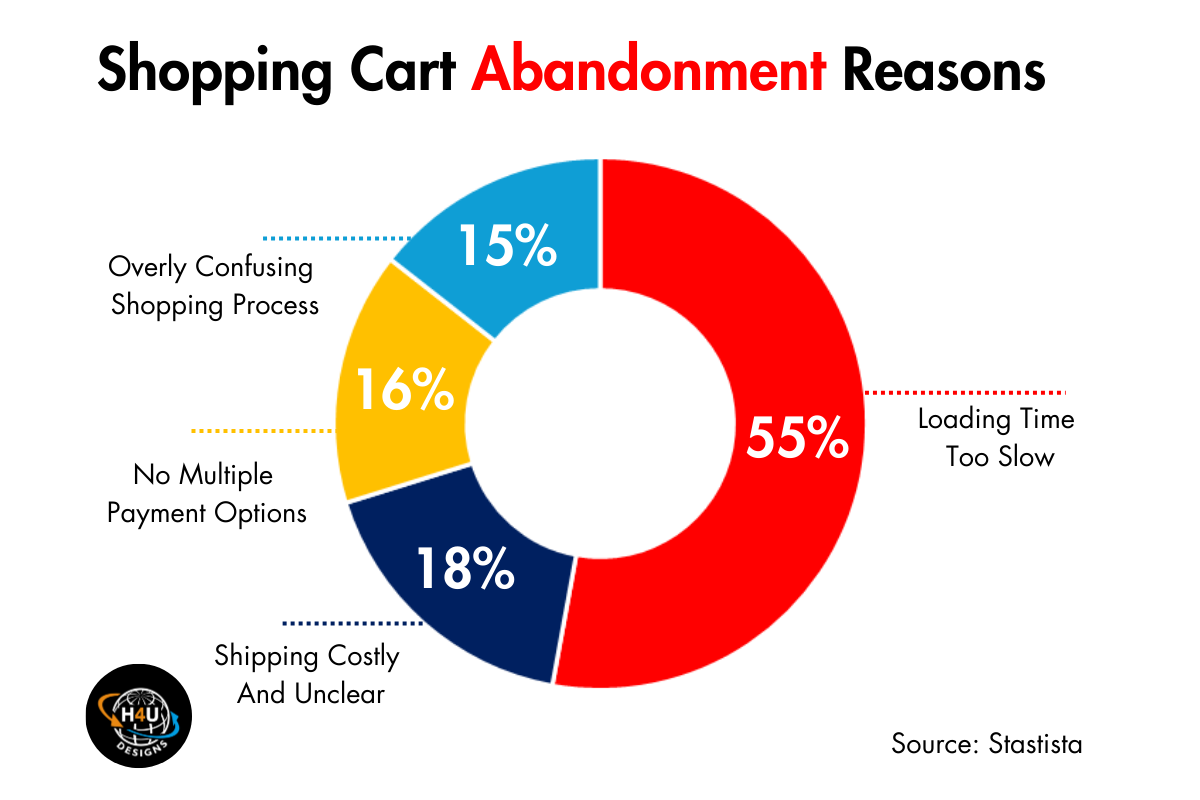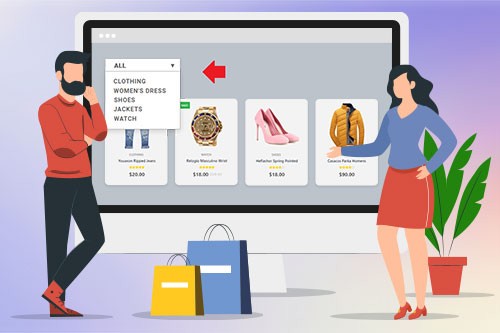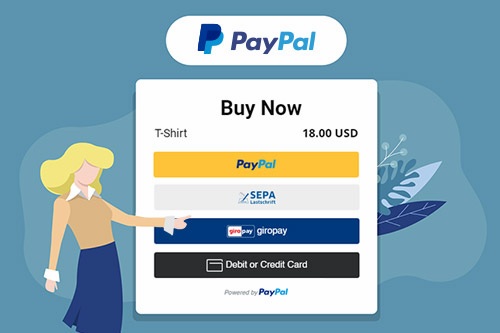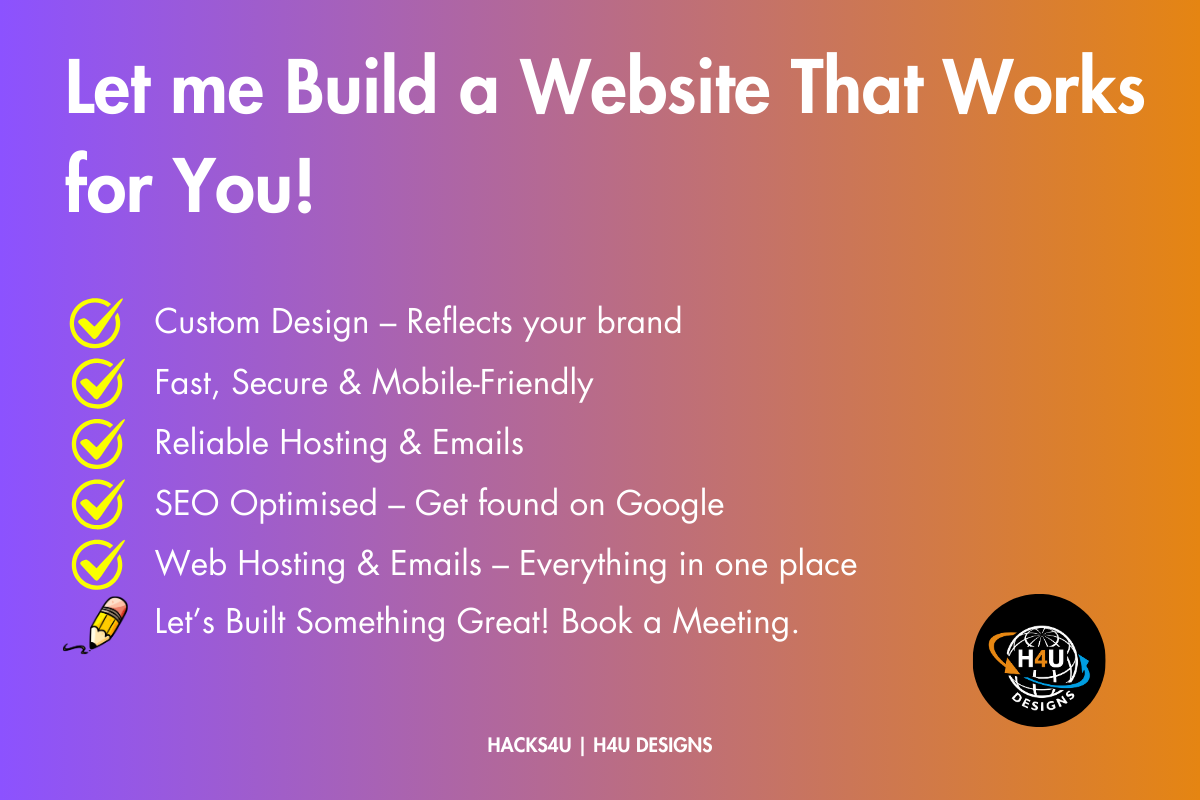
Introduction: Why Website Design Matters for E-commerce Sales
If you are running an online store, your website’s design isn’t just about aesthetics. It is a critical factor in conversion rates, user experience, and overall sales.
A poorly designed website can frustrate visitors, increase bounce rates, and in the worst case, lose customers. On the other hand, a well-optimised e-commerce website enhances navigation, builds trust, and makes the shopping experience smooth and enjoyable.
In this guide, we will explore the best e-commerce website design practices that can help you create a high-converting online store, ensuring that visitors stay engaged and complete their purchases.
1. Create a Mobile-Friendly Shopping Experience
Why Mobile Optimisation Is Important
With over 60% of online purchases happening on mobile devices, a mobile-responsive design is no longer optional.
If your site is not optimised for smartphones and tablets, you risk losing a massive chunk of your potential customers.
How to Optimise for Mobile:
- Use a responsive design that adapts seamlessly to different screen sizes.
- Simplify navigation with a hamburger menu for easier browsing.
- Ensure fast load times by compressing images and reducing heavy elements.
- Implement mobile-friendly payment options like Apple Pay and Google Pay.
Check out Google Mobile Optimisation Guide or A Definitive Guide to Mobile SEO for further reading.

2. Improve Website Speed to Reduce Bounce Rates
Why Site Speed Affects Conversions
A slow website kills sales. Research shows that 53% of users abandon a site that takes more than 3 seconds to load. The faster your website, the higher your chances of keeping customers engaged.
How to Speed Up Your E-commerce Site:
- Compress images using tools like TinyPNG to reduce file size without compromising quality.
- Use a Content Delivery Network (CDN) like Cloudfare, Akamai, or KeyCDN, to improve page loading speeds worldwide by delivering website content from the server closest to the user’s geographical location.
- Minimise CSS, JavaScript, and unnecessary plugins. Use asynchronous loading to improve site performance.
- Choose high-quality, reliable hosting optimised for e-commerce like NameCheap, SiteGround, HostGator, Bluehost.
Sources:
3. Simplify Navigation & Improve User Experience (UX)
How Poor Navigation Hurts Sales
Confusing website structures lead to frustration and cart abandonment. Users should be able to find products effortlessly within 3 clicks, ensuring a smooth and pleasant shopping experience for everyone.
Best Navigation Practices:
- Use a clear, structured menu with sections.
- Implement breadcrumbs to help users track their location.
- Optimise site search with filters (e.g., price, size, brand).
- Keep the checkout process simple—reduce the steps needed to complete a purchase (use site search functionality with filters and autocomplete options, categories and sub-categories to make navigation intuitive).
Sources:

4. Design High-Converting Product Pages
Important Elements of a Winning Product Page:
- High-quality images and videos (Invest in professional photography and use high-resolution images with zoom features).
- Persuasive product descriptions (highlight benefits as well, not just features).
- Customer reviews and ratings (this will boost trust and social proof).
- Clear call-to-action (CTA) buttons (“Buy Now,” “Add to Cart”).
Real-time Example: A cosmetic brand improved their product pages by adding high-quality images and videos, detailed descriptions, and customer reviews. This led to a 50% increase in product page views and a 20% increase in sales.
Sources:
5. Optimise Checkout for a Seamless Experience
How to Reduce Cart Abandonment:
- Offer guest checkout: Don’t force users to create an account (Streamline the checkout process by reducing the number of steps and offering guest checkout.
- Multiple Payment Options: Provide various payment methods like (credit/debit cards, Apple Pay, PayPal, Klarna, etc.), to accommodate different preferences.
- Implement a Clear Progress Bar: Ensure a clear progress bar to show checkout stages.
- Include trust signals: (SSL certificate, secure payment badges).
- Offer Shipment Transparency: Offer transparency in shipping fees, delivery time, and return policies. Don’t surprise your customers with hidden fees at checkout.
Sources:


FAQs: Answering Your E-commerce Design Questions
When choosing the best platform for your e-commerce website, you have several great options depending on your specific needs:
WooCommerce: Ideal if you already have a WordPress site, as it’s a powerful plugin that integrates seamlessly and offers a lot of flexibility.
Shopify: It’s perfect for beginners and small to medium businesses due to its user-friendly interface and extensive app store.
Magento: Best suited for larger businesses with more complex needs, as it provides robust features and customisation options.
To make your online store visually appealing, you should focus on several key elements:
- High-Quality Images: Use clear, high-resolution images for all your products. High-quality visuals allow customers to see the details and envision owning the product.
- Clean Layout: A clean and organised layout is essential. Avoid clutter and ensure that your website is easy to navigate. Group similar products together, utilise ample white space to prevent overcrowding and maintain a simple design so that the emphasis remains on your products.
- Consistent Branding: Consistency in branding helps create a professional appearance. Use the same colour scheme, fonts, and logo throughout your website. This uniformity not only makes your site appear more polished, but also assists in building brand recognition and trust with your customers.
To increase trust in your e-commerce website, you can implement the following strategies:
- Display Genuine Customer Reviews and Ratings:
- Showcase reviews and ratings from real customers to build credibility.
- Encourage satisfied customers to leave feedback on their purchases.
- Respond to reviews, both positive and negative, to show customer care.
Security Badges Indicating Safe Transactions:
- Include security logos and badges from reputable sources such as SSL certificates.
- Highlight your secure payment methods to reassure customers of safe transactions.
- Ensure your website is PCI compliant to protect customer information.
Clear Return Policies:
- Provide easily accessible and understandable return policies on your website.
- Offer a straightforward return process with clear instructions.
- Ensure that customers are aware of any return deadlines or conditions.
Choosing the right colours for your e-commerce website can significantly impact customer behaviour and perception.
Blue: is known to evoke feelings of trust and dependability, making customers feel secure while navigating your site.
Green: often symbolises action and positivity, encouraging customers to make purchases and promoting a sense of freshness and vitality.
Orange: is a vibrant colour associated with urgency and enthusiasm, which can be used to highlight special offers or limited-time deals. By thoughtfully incorporating these colours into your website design, you can enhance user experience and drive engagement, ultimately boosting sales and customer satisfaction.
To maintain a successful e-commerce website, it’s important to regularly update your product listings to reflect new arrivals and remove discontinued items.
Optimising your website’s content to keep it relevant and engaging ensures it remains appealing to customers.
Refreshing the design every few years helps to keep the site looking modern and user-friendly. By staying current with trends and technology, you provide a better shopping experience for your customers, inspiring confidence and encouraging repeat visits.
These efforts contribute to a more dynamic and successful online store.
Choosing the best fonts for an online store is vital for readability and user experience.
Sans-serif fonts, such as Roboto and Open Sans, are highly recommended because they are clean, modern, and easy to read on screens.
These fonts don’t have the small projecting features called “serifs” at the end of strokes, making text appear clear and straightforward.
Using readable fonts helps customers navigate your site effortlessly, ensuring they focus on the products rather than struggling with the text.
Always remember, that a pleasant reading experience can significantly enhance overall user satisfaction and encourage more sales.
SEO, or Search Engine Optimisation, is incredibly important for your e-commerce website because it helps improve your site’s visibility on search engines like Google.
By optimising your product pages with relevant keywords, you make it easier for potential customers to find your products.
Improving your site speed ensures a better user experience, which search engines reward with higher rankings.
Effective SEO also involves creating high-quality content, using proper tags, and building backlinks.
These strategies collectively enhance your website’s ranking, driving more organic traffic, and ultimately increasing your sales.
In other words, emphasising SEO is a compassionate approach to ensure your customers easily find what they need.
Absolutely, including a blog on your e-commerce site is highly beneficial. Blogs help improve your website’s SEO, making it easier for potential customers to find your products through search engines.
By providing valuable content that addresses common questions or shares useful tips, you not only attract organic traffic but also engage with your audience on a deeper level.
This builds trust and establishes your brand as an authority in your niche and a well-maintained blog keeps your website dynamic and relevant, encouraging return visits and increasing the likelihood of conversions.
To provide the best user experience on your e-commerce site, it’s important to ensure that your pages load quickly. Ideally, aim for a load time of under 2 seconds.
Slow-loading pages can frustrate visitors and lead to higher bounce rates, meaning potential customers leave your site without making a purchase.
By focusing on optimising your website’s speed, you not only improve user satisfaction but also increase the chances of higher conversion rates.
A fast-loading site shows that you value your customers’ time, making them more likely to trust and shop with you.
A strong call to action (CTA) is important for guiding your customers towards the desired action. Clear wording, such as “Buy Now” or “Sign Up“, ensures the message is direct and straightforward.
Creating a sense of urgency with phrases like “Limited Time Offer” motivates customers to act quickly, helping to increase conversions.
A contrasting colour for the CTA button makes it stand out visually on your webpage, ensuring it catches the eye.
By thoughtfully crafting your CTA, you can make it easy for customers to understand and follow, thereby improving user experience and boosting engagement.
Final Thoughts
A well-designed e-commerce website can dramatically impact your sales and customer retention. By implementing mobile optimisation, fast load times, clear navigation, high-converting product pages, and an optimised checkout process, you can turn visitors into loyal customers.
Are you ready to boost your online sales?
Apply these strategies to your e-commerce store today and watch your conversions grow!
I hope this guide has helped you in optimising your website. Please do share consider signing up for my Newsletter for upcoming tips, guides, and useful resources.
Affiliate Declaration:
The use of affiliate links on this website may result in earning a small commission for any purchases made, at no additional cost to you (the user). Please review our privacy and cookie policy, as well as our affiliate disclaimer.


